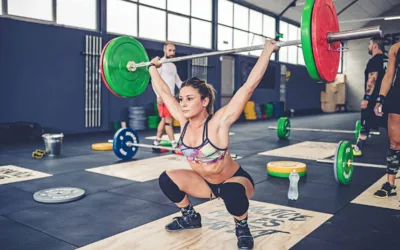3 French Contrast Workouts For Improving Acceleration, Vertical Jump, And Change of Direction
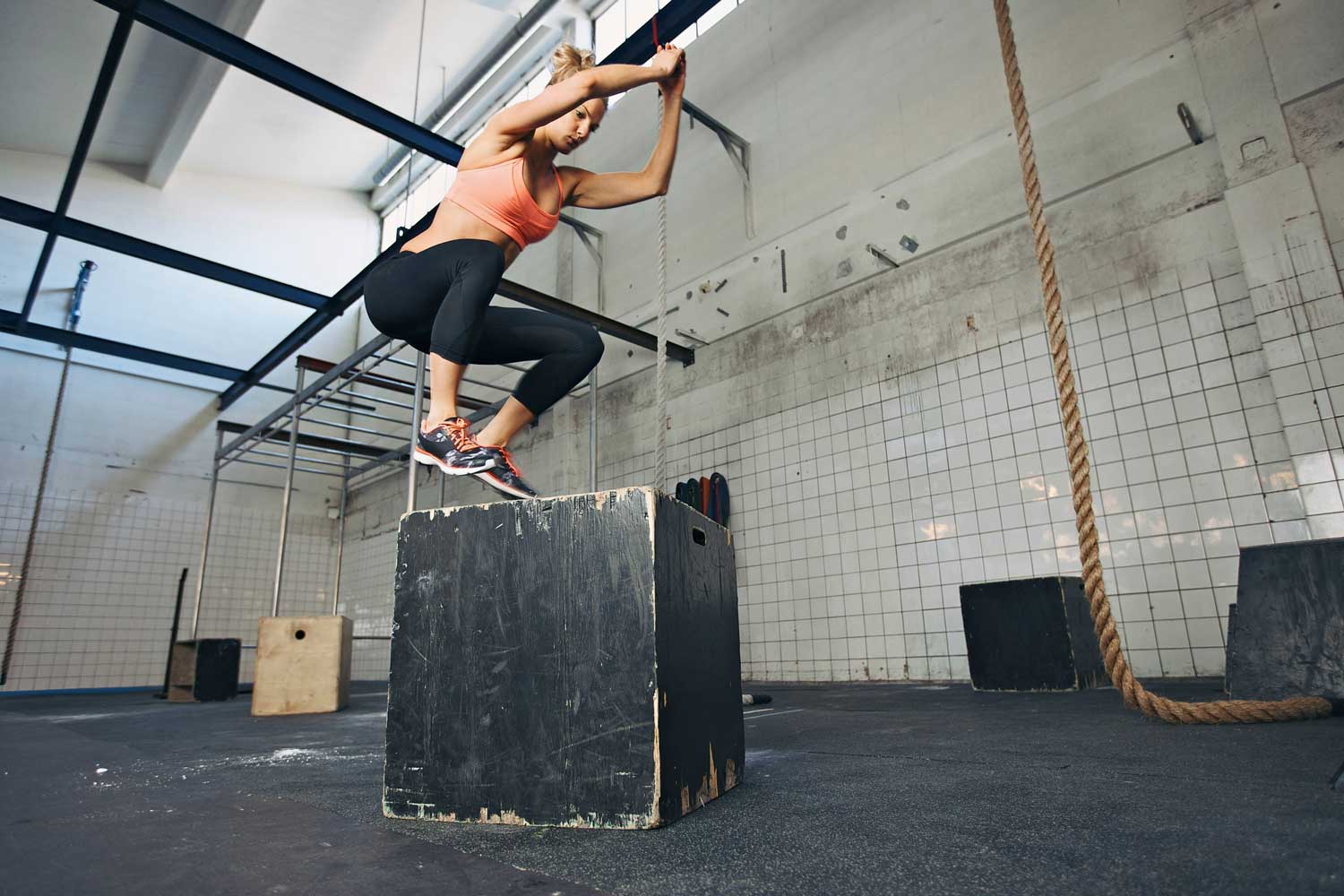
Joel Smith
Joel Smith, MS, CSCS is a NCAA Division I Strength Coach working in the PAC12 conference. He has been a track and field jumper and javelin thrower, track coach, strength coach, personal trainer, researcher, writer and lecturer in his 8 years in the professional field. You can connect with Joel on his website.
Have you been looking for a training modality that can rapidly deliver gains in speed, power, and vertical leaping ability? If you want to get powerful in a hurry, there are few applications that will deliver this in the manner that the French Contrast platform can.
If you haven’t heard of French Contrast style training, here is a quick template:
- Big Strength Movement
- High Force Plyometric or Speed Movement
- Speed-Strength Movement
- High Speed Plyometric or Speed Movement
Essentially, French Contrast is two “waves” of potentiation-based training, all rolled into one big complex set. Generally, you’ll take 20 seconds between exercises and 2-5 minutes between sets.
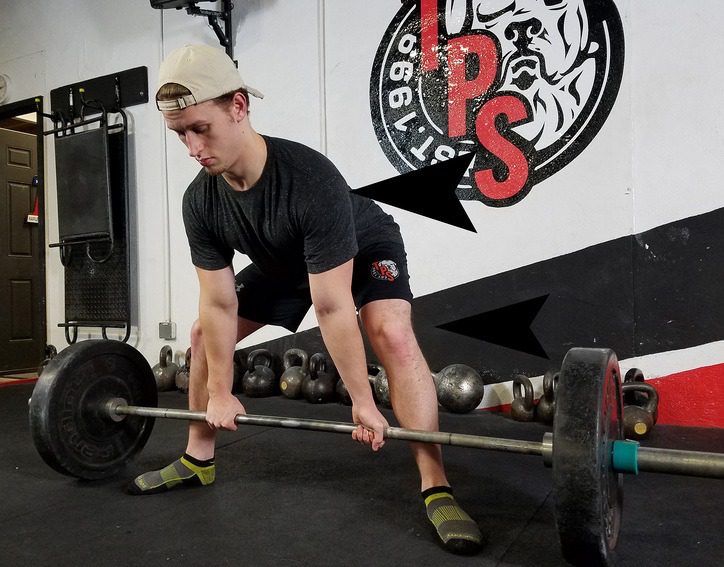
Complex training has been around for a while, but research is generally a bit mixed on exactly how well it works. For the most part, we think it’s better for power than “regular” training orders, but perhaps this is because the research design of complex training could have done a better job.
How is complex training optimally assembled?
By matching rhythms and optimizing potentiation from one exercise to another. Too many complex training ideals use potentiation methods that are too exhausting and have exercise selections that don’t optimally complement sprint, jump, and change of direction rhythms.
Track coaches have figured this out for some time, as there are often particular lifts and workouts that establish an optimal rhythm for the athlete in the next day competition. French Contrast can really take advantage of the rhythm aspect of performance in a short window.
French Contrast Mistakes
I see, however, a few mistakes in French Contrast training that reduce its effectiveness and application. They are:
1. Using the fact that there happens to be a heavy strength movement as an opportunity to be an imbecile with too much weight/too slow movements on the maximal movement, making it overly fatiguing. Likely, this will not help an athlete with explosion paradigms in the feet.
2. Not resting long enough between exercises. French Contrast is a circuit, but it’s not CrossFit.
3. Not selecting appropriately matching exercises, and half-assing the plyometric or speed component of the workout due to over-gassing on the big lifts.
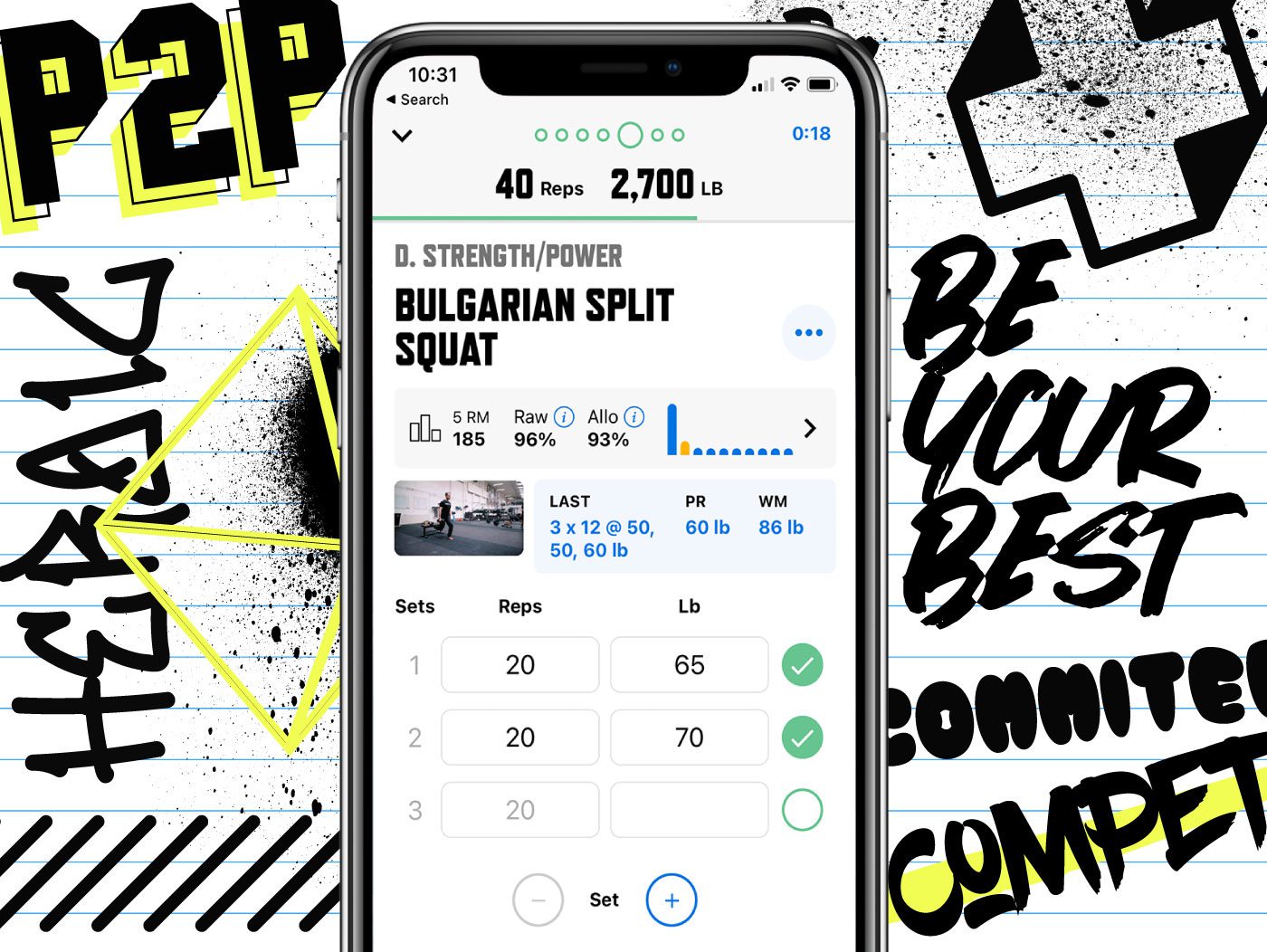

DOWNLOAD
trainheroic’s
free APP
Excel WIth French Contrast
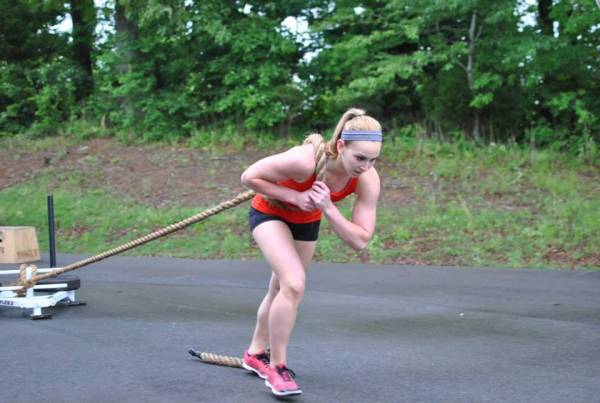
In order to make a great French Contrast training program, I would recommend the following:
1. Maximize the potentiation effects of your big strength lift. This requires not being an idiot with it, so use movements that don’t cause undue fatigue and still tie into the positions you are training in the rest of your French Contrast circuit. Are you training acceleration? Then why are you taking your squat ass to grass, or keeping your shins perpendicular to the ground? Is that the position you accelerate from? Be mindful of positional specificity here.
2. Find something to overload in the plyometric component of the French Contrast circuit. Many people just jump up onto a box and think that’s great overload. What are you trying to get out of it? You can always work on loading up a jump more quickly or using specific overhead targets to unload it in a more specific manner.
3. Perform a trackable power measure within your sets. You should be seeing this measure steadily improve throughout the French Contrast sets. This can be vertical jump, a 10-yard dash, etc. If it’s going up, your scheme is working. If it isn’t, you need to rethink your parameters. Also know that one French Contrast setup of intensities/rest periods will not have the same effect on each individual. Some athletes get a stronger potentiation effect from heavy limit strength than others.
With that in mind, here are 3 good setups you can use to train acceleration, vertical jump, or change of direction in the French Contrast paradigm. All of these circuits can be performed for 2-5 rounds, depending on the level of the athlete and how much fatigue is looking to be incurred by the training.
Acceleration With French Contrast
Good acceleration means good hip extension and flexion power. Strong quads are also important, but the context of the acceleration depends on how much they are utilized. A fail-safe way to improve an athlete’s extension flexion power revolves around pulling paradigms.
Here is a sample circuit in this vein of thought:
- Strength Lift: Deadlift x 2 reps at 80-85% 1RM OR Mid-thigh isometric pull maximal for 5 seconds
- High Force Speed: Heavy sled pull loaded to 50% velocity decrement for 10 meters
- Fast-Strength Lift: Clean from the floor x 2 reps @ 60-65% 1RM
- High Speed Movement: Assisted 10m sprint OR drop-med ball granny
Vertical Jump with French Contrast
Vertical jumping can come in many forms, but a standing jump puts a premium on the quads and glutes, as well as transmission to the foot.
Here is a simple setup for improving standing and running jumping ability off two feet:
- Strength Lift: Half squat to a box x 2 reps @ 80-85% OR Isometric ¼ squat heavy hold for 5 seconds
- High Force Speed: Depth jump to an overhead target from a 24” box
- Fast-Strength Lift: Speed ½ back squat with bodyweight on the bar x 3
- High Speed Movement: Band assisted jumps x 3
Here is a sample circuit in this vein of thought:
- Strength Lift: Deadlift x 2 reps at 80-85% 1RM OR Mid-thigh isometric pull maximal for 5 seconds
- High Force Speed: Heavy sled pull loaded to 50% velocity decrement for 10 meters
- Fast-Strength Lift: Clean from the floor x 2 reps @ 60-65% 1RM
- High Speed Movement: Assisted 10m sprint OR drop-med ball granny
Change of Direction with French Contrast
Change of direction is a sport skill that often gets completely botched because athletes either:
- Perform the movement on restrictive environmental variables, such as a speed ladder
- Perform complex running movements in the absence of sport specific stimuli to react to, which can actually have a negative transfer over time
A 5-0-5, for example, in a canned environment is performed with a posture that would be horribly negative to the result of an actual sport in many cases. It is often a good practice in COD to focus on:
- The explosive strength and mobility necessary to make a good cut
- Training the transitional phases of movement that happen between the deceleration and re-acceleration on the field, which are a little more general in nature
This isn’t an article on change of direction, but here is a French Contrast application I enjoy for developing some very basic COD qualities:
- Strength Lift: Sumo deadlift x 2 @75-85%
- High Force Speed: Lateral “cut” depth jump off 18” box x 1 each way
- Fast-Strength Lift: Russian KB jumps x 3 @30%
- High Speed Movement: Overspeed 1-2 cut @ 2 each way
The Marketplace: Shop Expert Programming from Real Coaches
Sometimes all you need to reach your destination on your fitness journey is an expert guide. We’ve got you covered.
The TrainHeroic marketplace is the only place to purchase programming from the World’s best coaches, delivered through the immersive training experience of the TrainHeroic app.
Browse from thousands of programs for any goal and every type of athlete.
Or, join a monthly programming membership to connect with a real coach and community of athletes training just like you. Try any programming subscription free for 7 days.
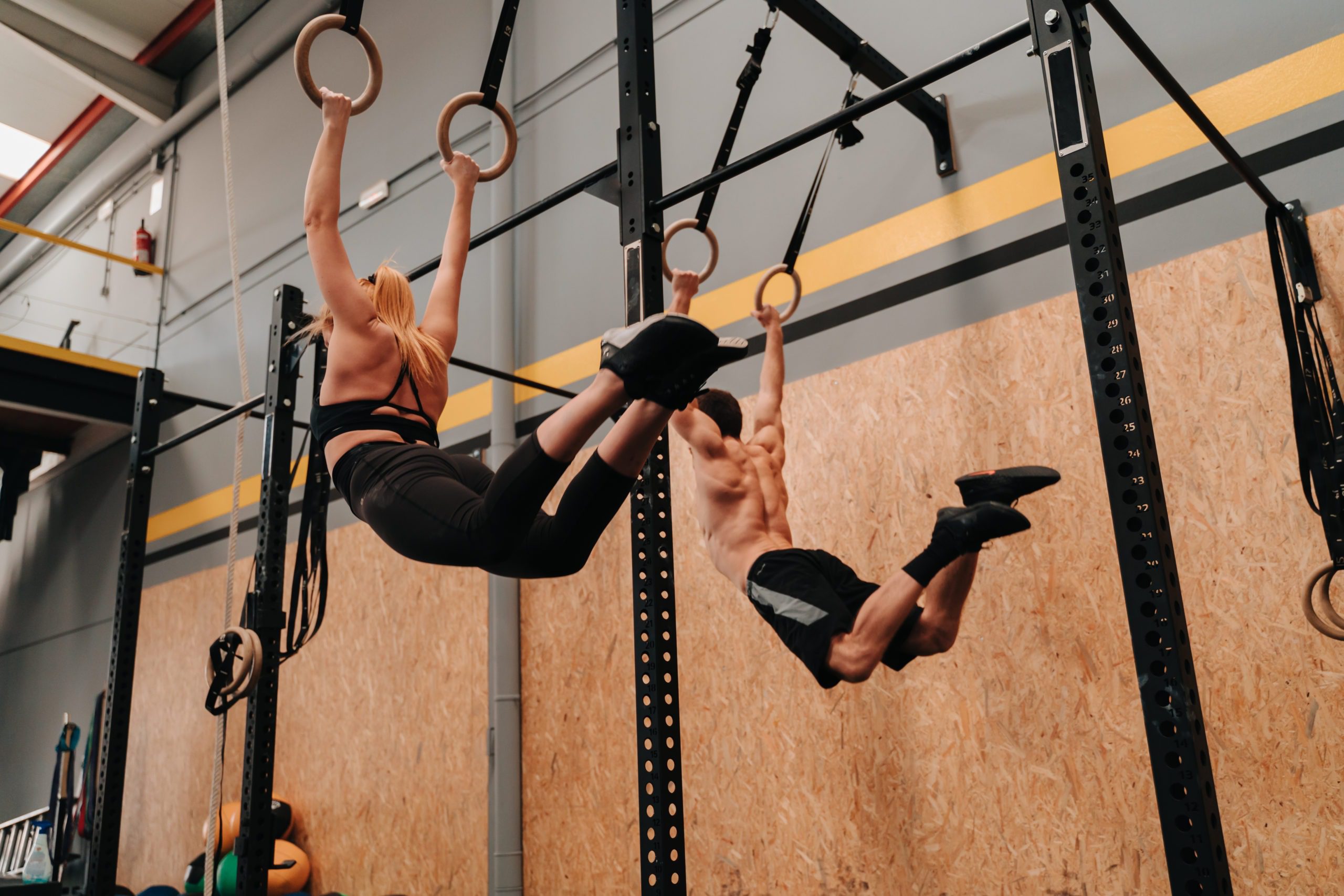
Related articles
3 Ways to Improve Mobility Without Stretching
Are you still trying the endless foam rolling and stretching exercises to get that deep squat position? We know how important mobility is for great, or even GOOD performance. All professional athletes have some comfortability in end ranges of motion. So, what else do...
The Ultimate Guide to Lunges: Queen of all Glute Exercises
Your glutes are the largest muscle group in your body. They’re responsible for almost everything your legs do—walking, running, jumping, squatting, lunging, and just standing upright. As far as moving through space goes, strong glutes are the bedrock of overall...
A Beginner’s Guide to Steel Mace Training
Author: Jesse Grund
Mace training will make you a better mover without it’s not confining you to a fixed space or predetermined range of motion. Second, it’s an offset load with 80 to 90 percent of the weight in the head. You’re also constantly having to resist rotation, which creates greater core engagement.

Join the community
Sign up for the latest training news and updates from TrainHeroic

About TrainHeroic
Support
Made with love, sweat, protein isolate and hard work in Denver, CO
© 2021 TrainHeroic, Inc. All rights reserved.

